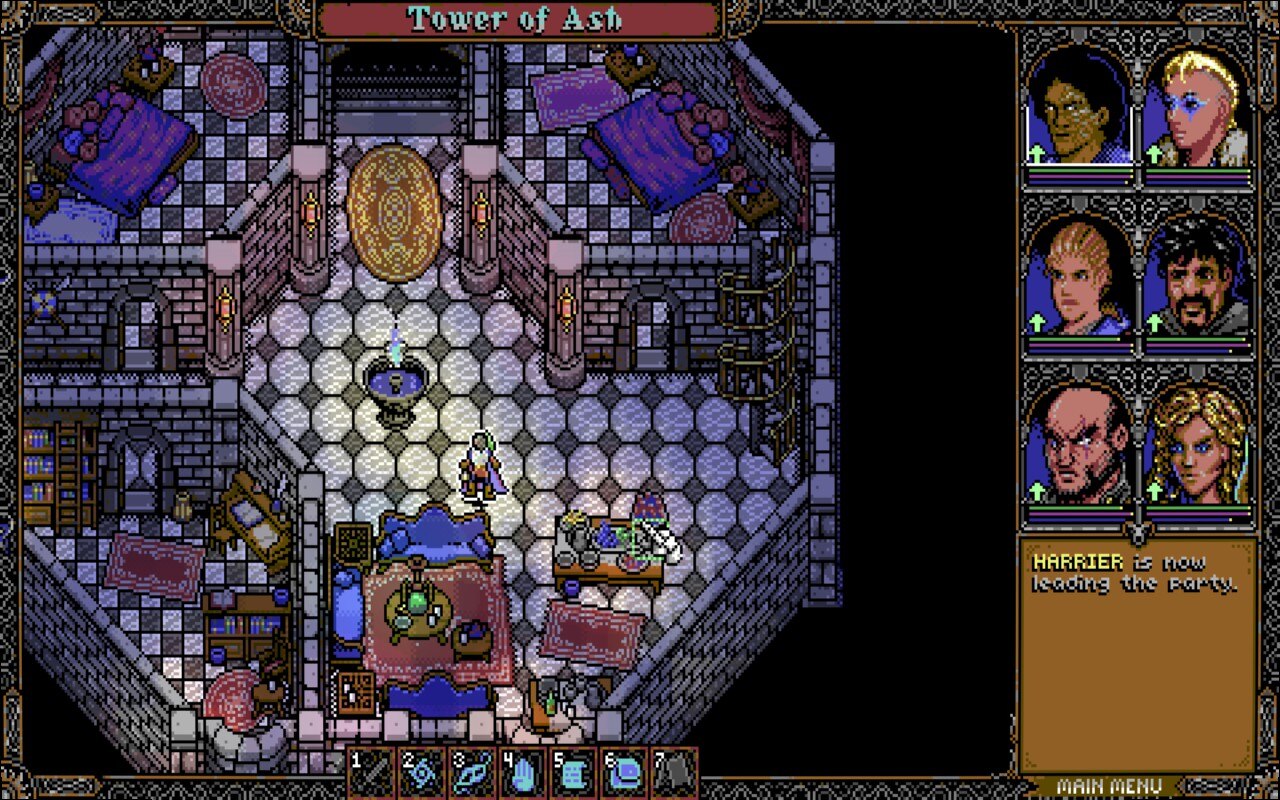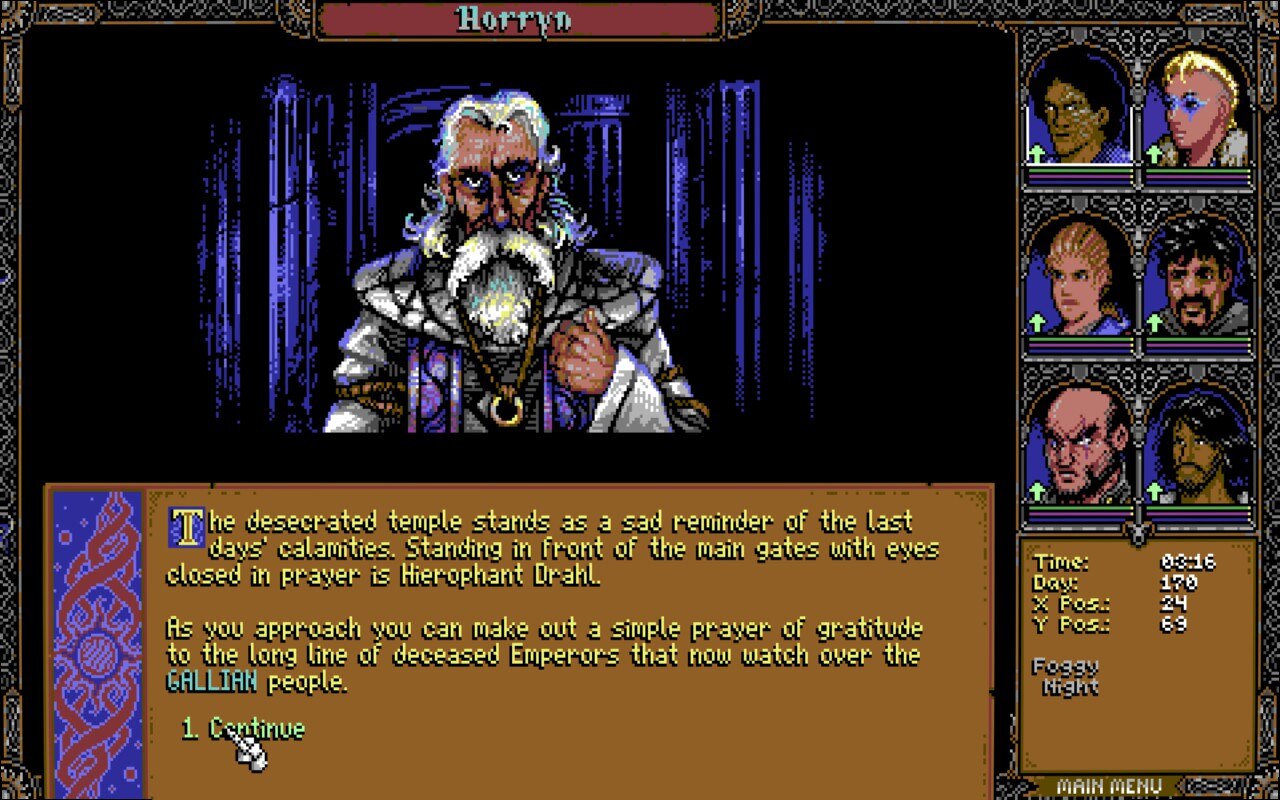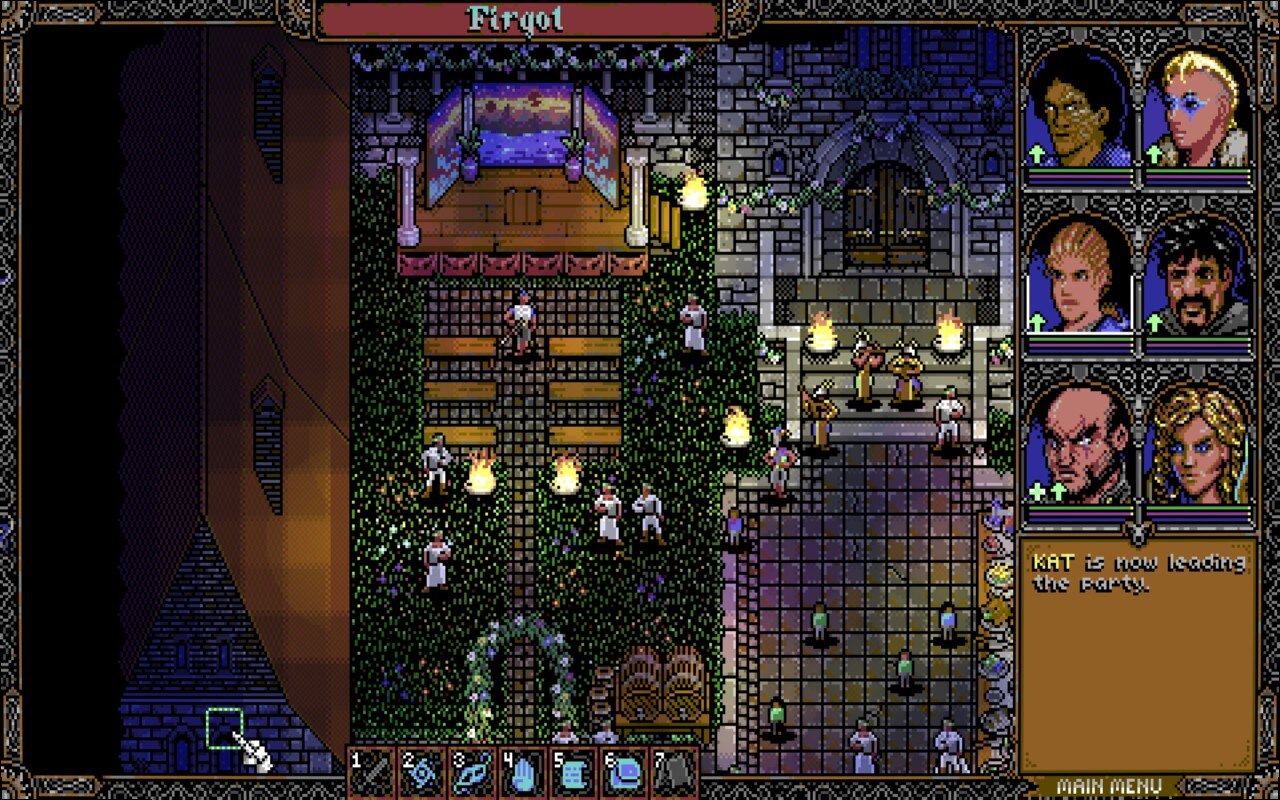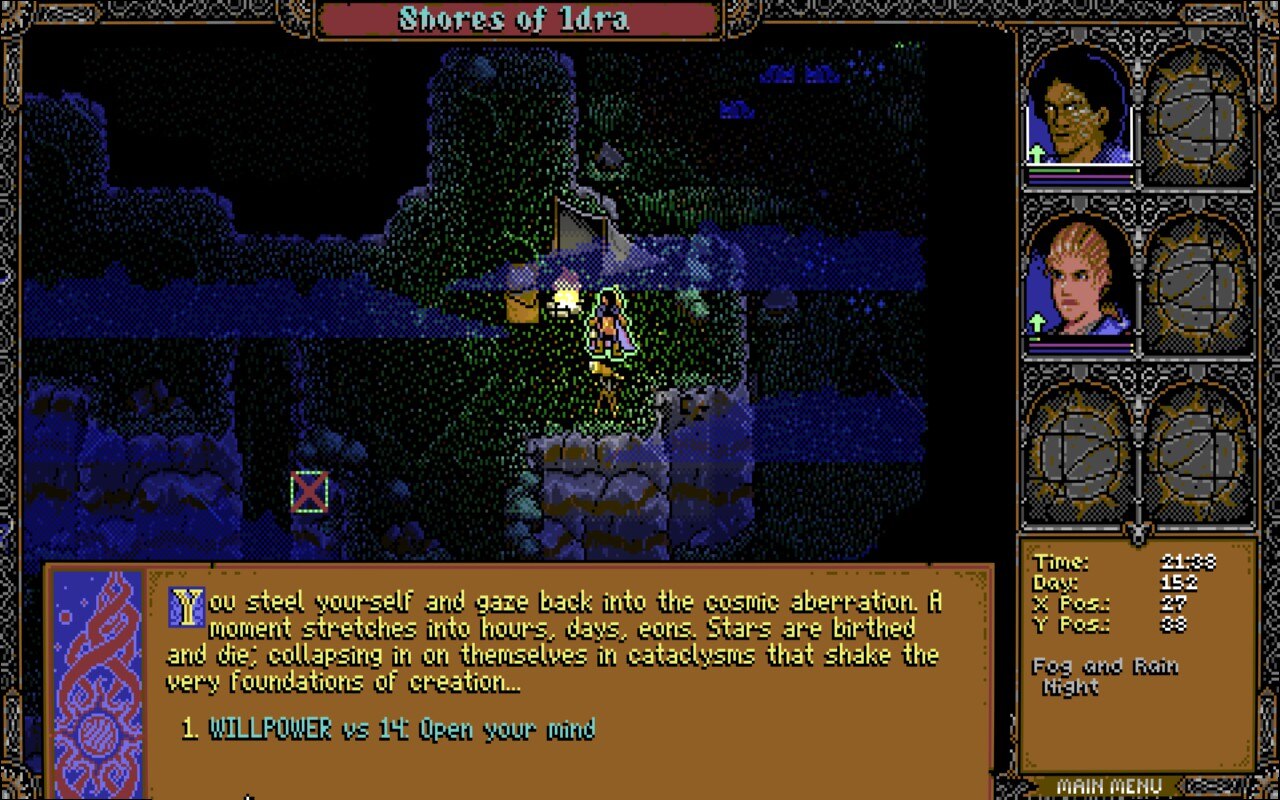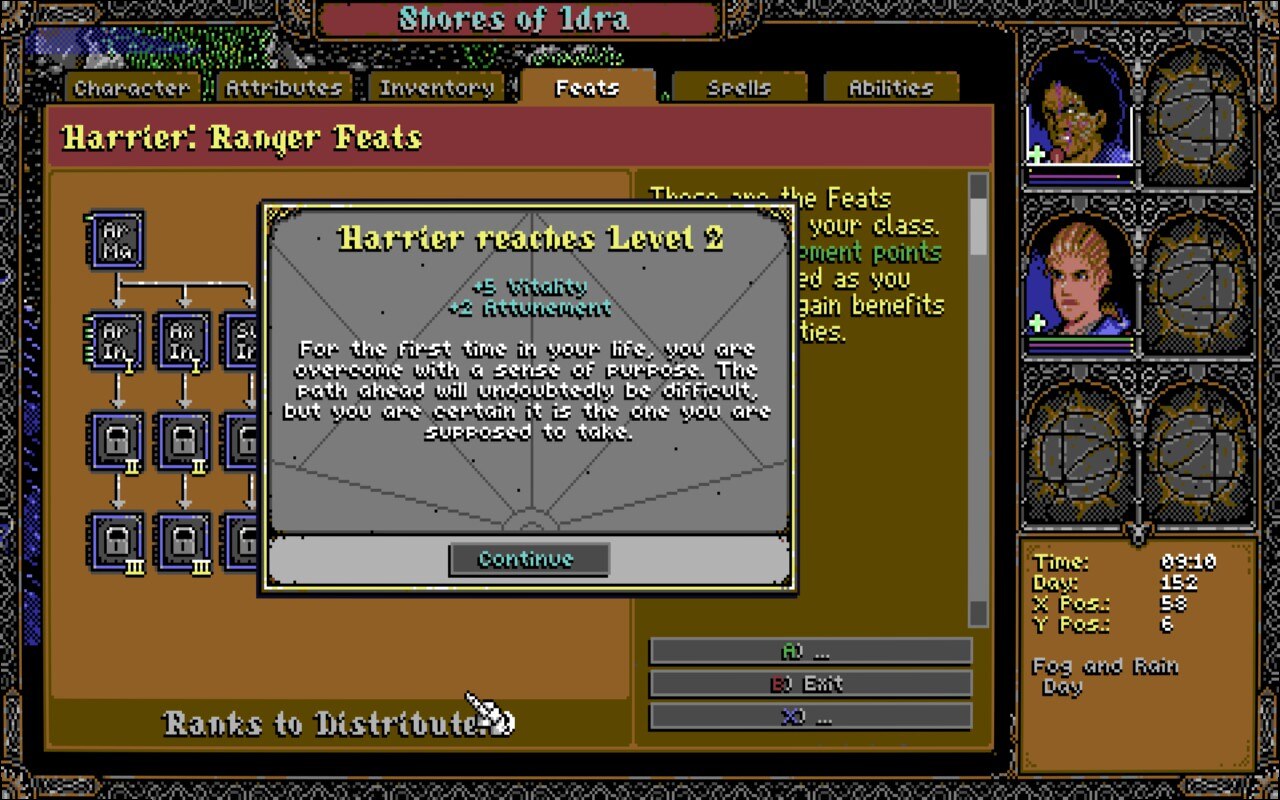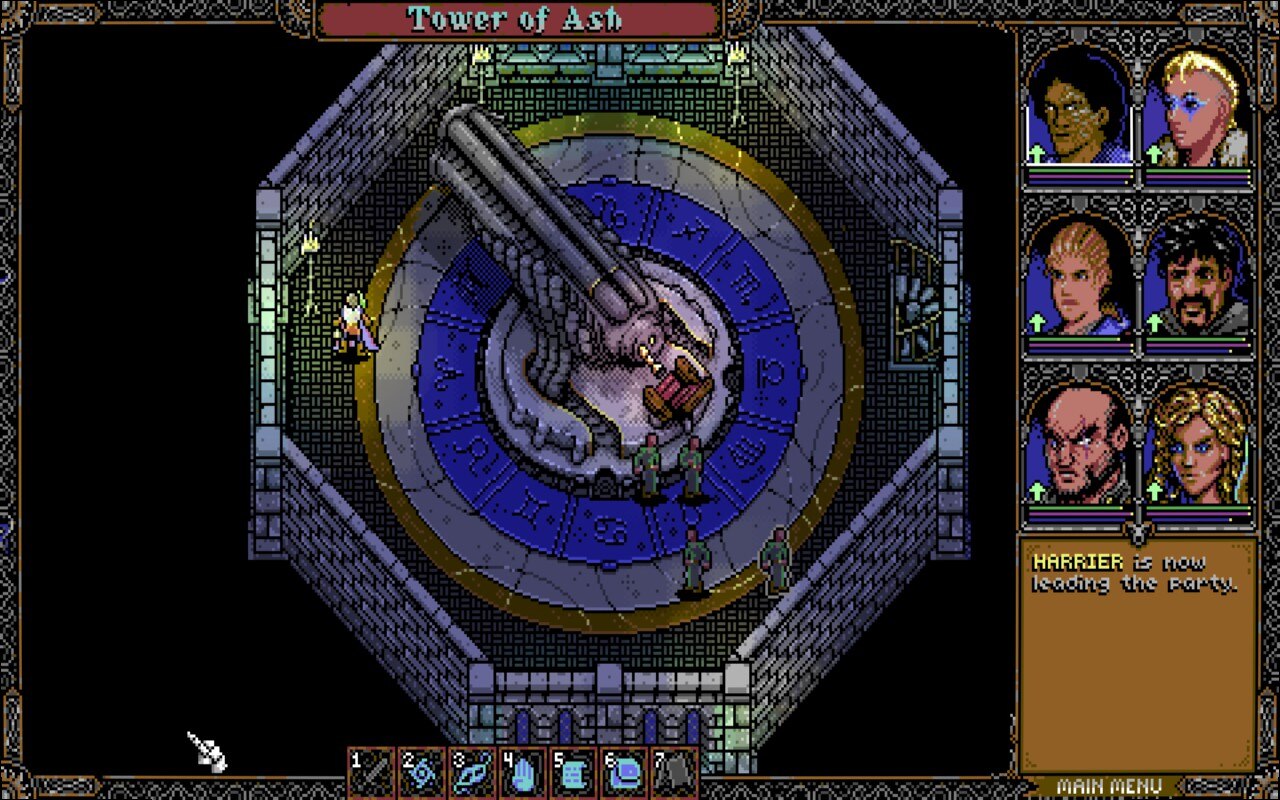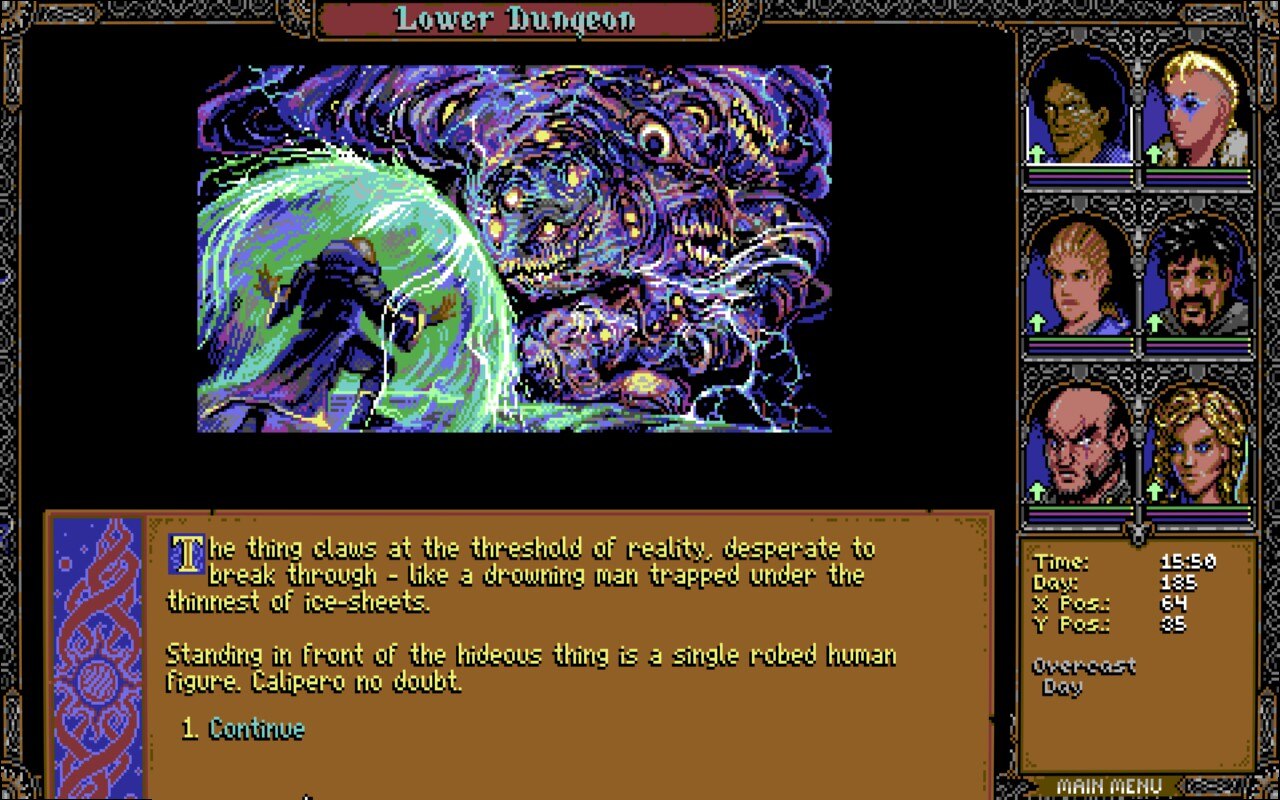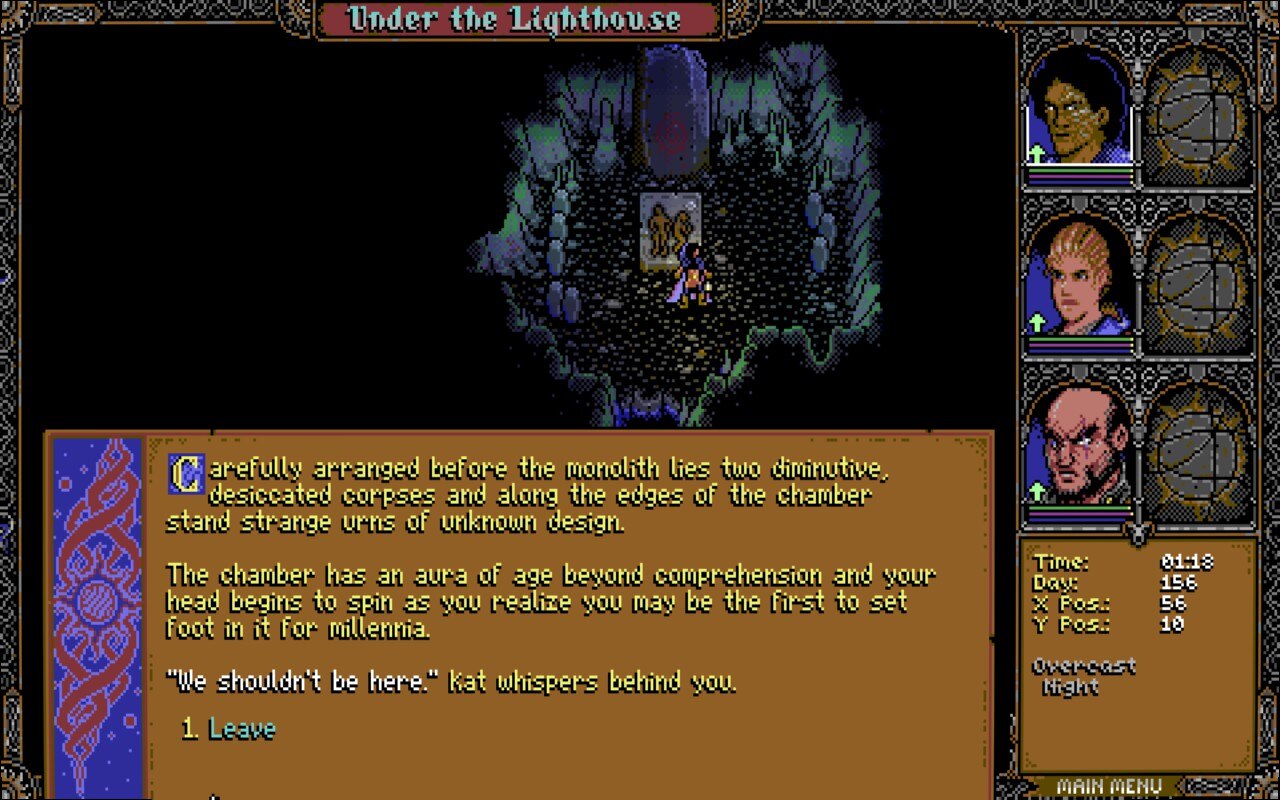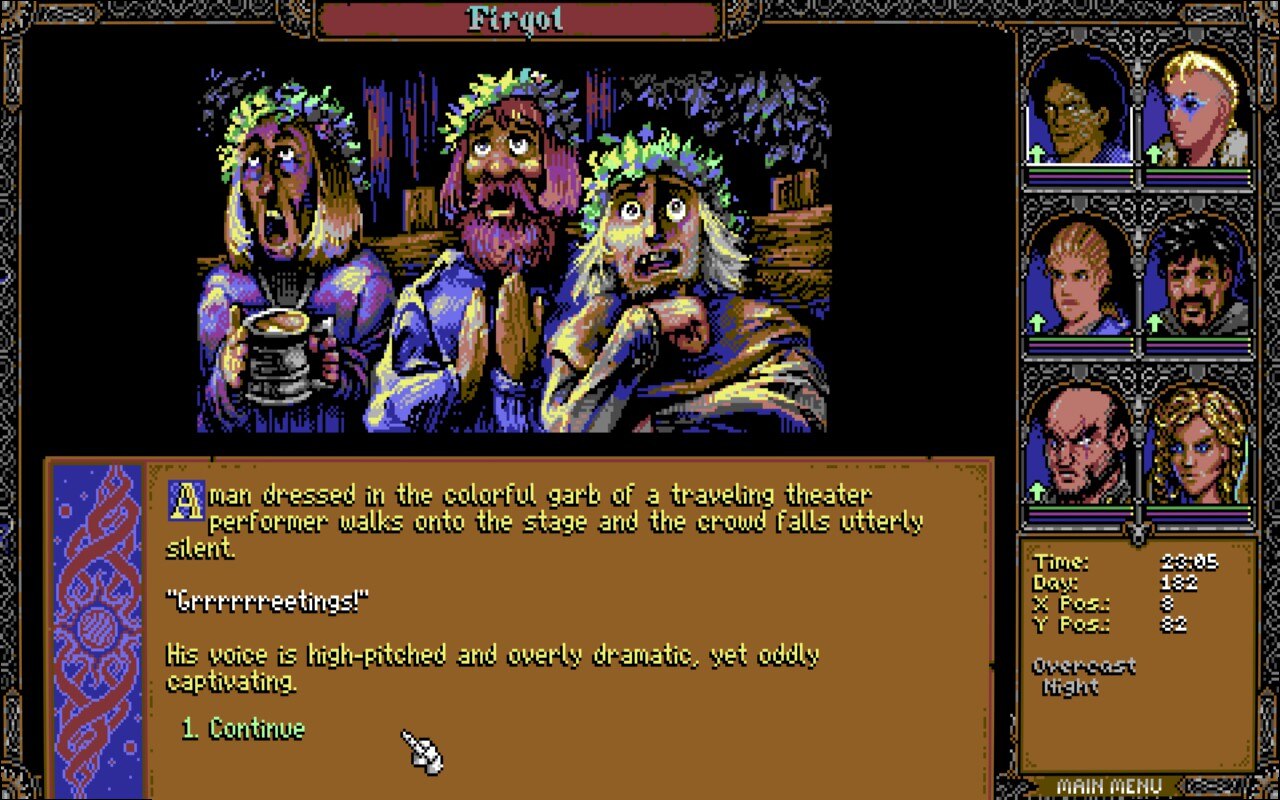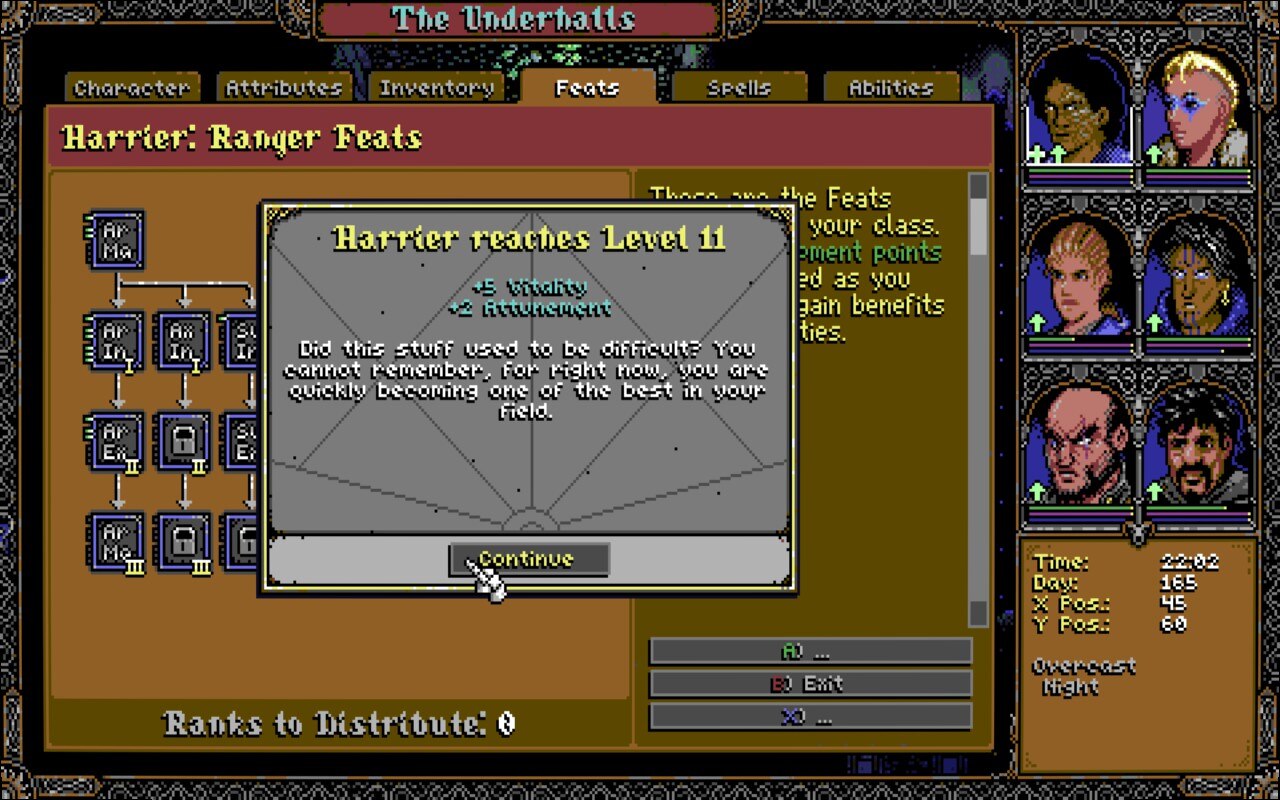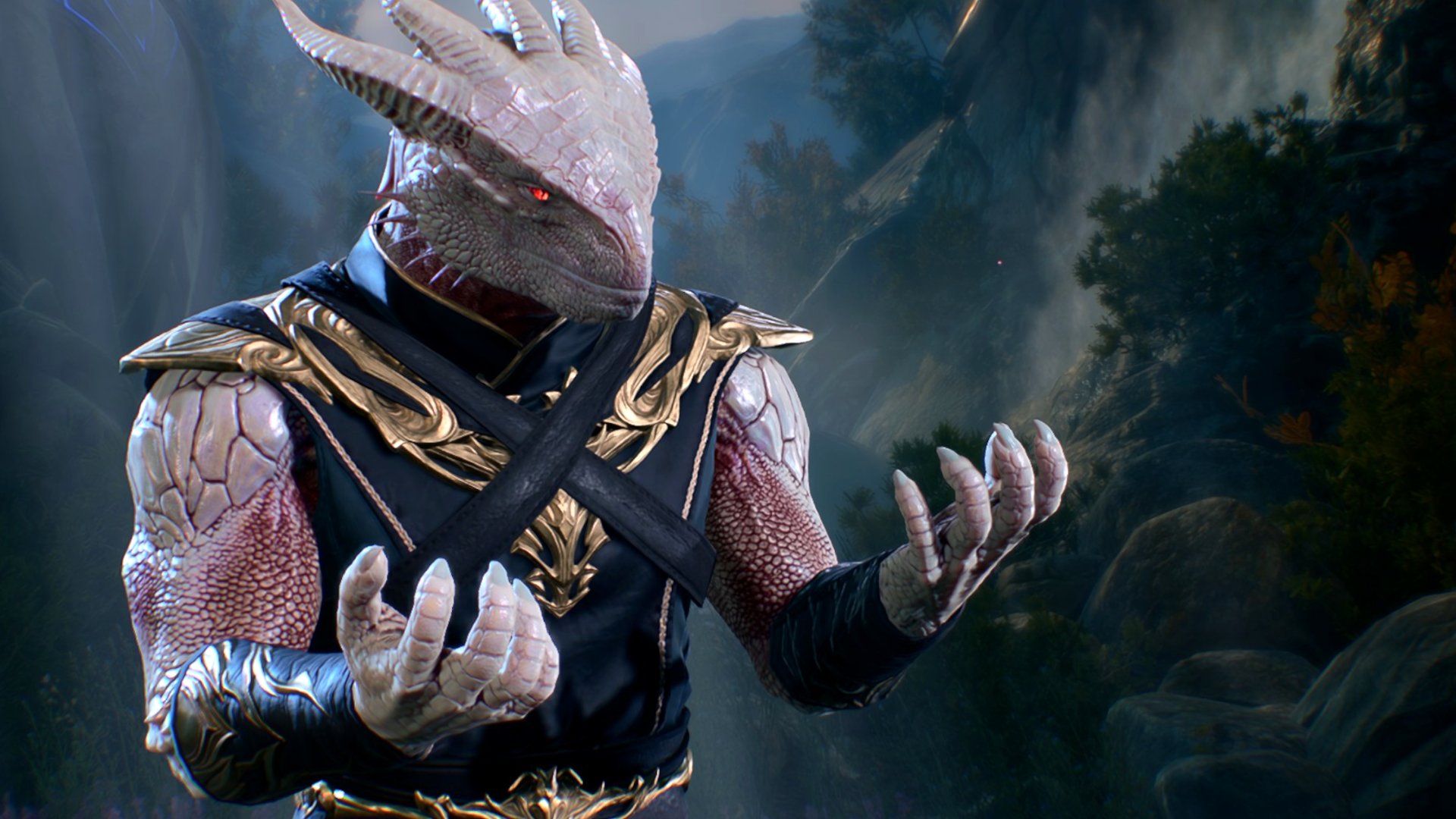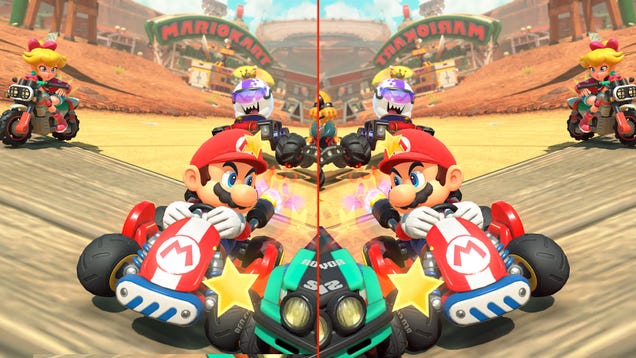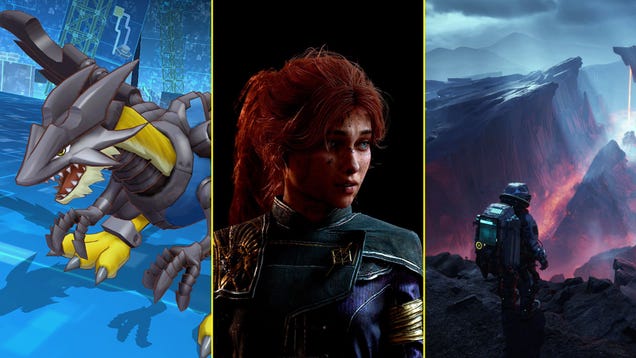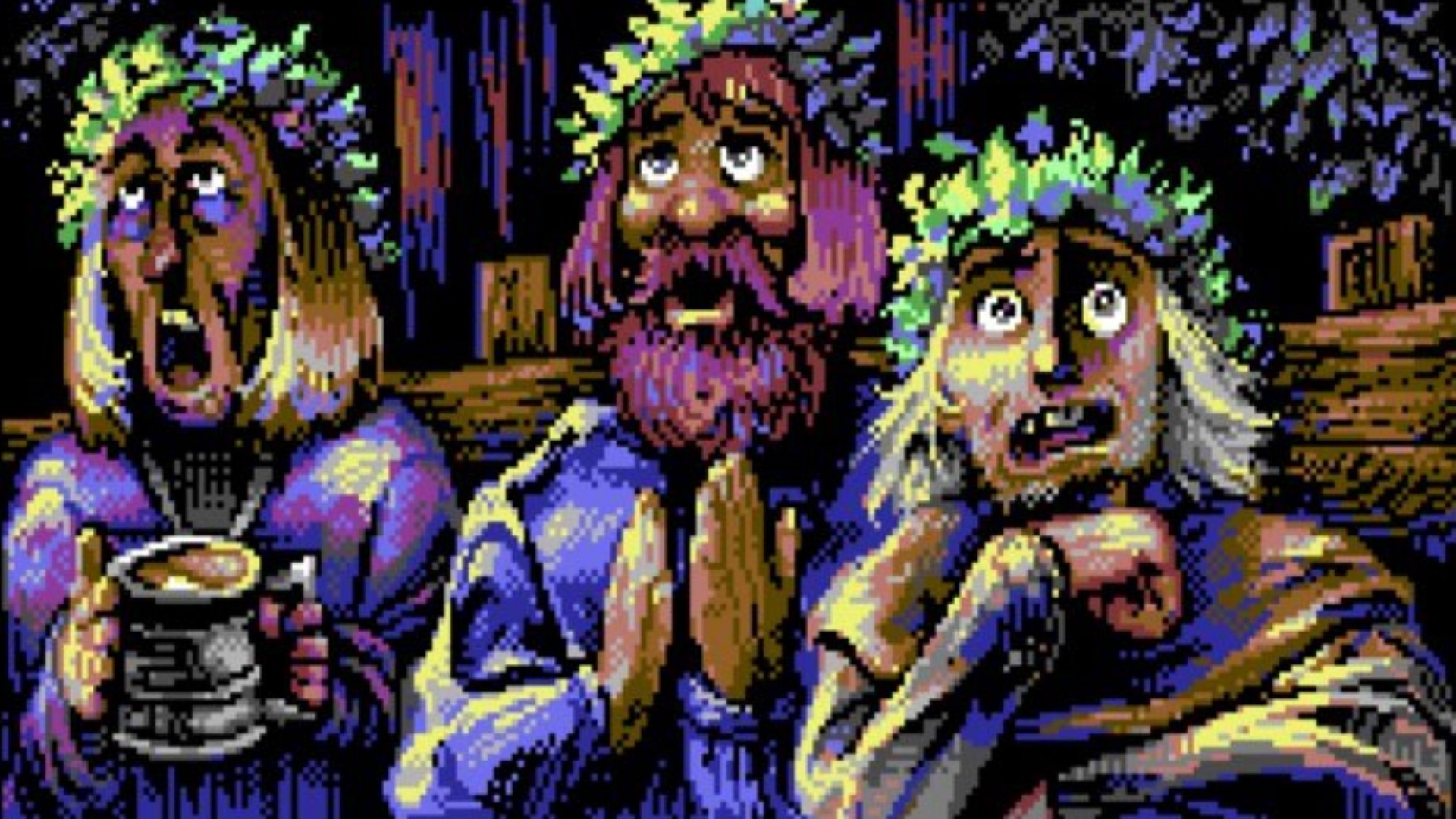
Come for the fantastic retro RPG combat and exploration, stay for the utterly gripping cosmic horror.

There were a few games last year that we didn’t have time to review, so before 2025 gets too crazy we’re playing review catch-up and rectifying some of these omissions. So if you’re reading this and wondering if you’ve slipped through a wormhole back into 2024, don’t worry, you’ve not become unfastened from time. We’re just running late.
Before playing Skald: Against the Black Priory, I liked the idea of this throwback roleplaying game, but wasn’t sure it was for me. I love old-school RPGs, but pre-1997 is too old-school for me, and Skald’s primary source of visual inspiration is an era of DOS and Commodore RPGs I have respect, but not much affection for. Skald’s gorgeous VGA-inspired pixel art scared me off as much as it enticed me.
Finally diving into the game, though, I found something decidedly more modern: Skald is crisp and tight, threading the needle with an elegant, modern design sensibility that doesn’t sand off the complexity and depth I crave in my RPGs. It’s easy to get your arms around, but also challenging and surprising the whole way through. The biggest shock of all was the writing: Skald is one of the most effective, unnerving cosmic horror stories I’ve seen in a game, and part of that comes from all the effort it puts into fleshing out its fantasy world and characters before tearing it all down.
Roll for initiative
When I’m playing an RPG with its own bespoke rules (that is, not based on something familiar like D&D or SPECIAL), I always feel like I’m making a leap of faith. Is this one where dialogue skills are fun and useful? Which weapon and armor proficiencies are actually supported by the game’s loot? Do rogues just suck for some reason? For every Divinity: Original Sin or Disco Elysium that knocks it out of the park, there’s something like Broken Roads or Rogue Trader that leaves me frustrated, pondering an empty character sheet full of stats, skills, jargon, and effects of dubious utility.
Skald blessedly falls into the former camp. It’s very much iterating on D&D, but with a unique progression system and checks based around 2d6 dice rolls rather than the d20. Every class can be powerful and find a niche in a party of six, and you only mess around with skills and attribute numbers at character creation. As the game goes on, you can increase those scores with gear and the passive bonuses of feats you choose on level-up. ranger feats, for example, will boost your dexterity and survival in addition to giving you powerful new attacks.
Skald’s combat is similarly simple and elegant. Battles are turn-based and on a grid, while the classes feel very distinct to command. Rogues are all about positioning, backstabs, stealth, and beginning fights with advantageous ambush rounds. Armsmasters are your classic fighter, wanting to charge in and facetank everything. The Guild Magos (wizard) and Battle-Magos have a Baldur’s Gate-esque variety of spell effects that you can learn both on level up and through scrolls you find in the world (but the level-1 Swarm of Gnats is a beast that can carry you through much of the game), while rangers are machine gun turrets that can snipe enemies from anywhere on the screen.
What is it? A retro RPG inspired by the look of Ultima and feel of Baldur’s Gate.
Release date May 30, 2024
Expect to pay $15/£13
Developer High North Studios AS
Publisher Raw Fury
Reviewed on: Steam Deck
Steam Deck Verified
Multiplayer? No
Link Official Website
Most of Skald’s quests end in with a fight, but there’s a lot of non-combat gameplay, comparable to Baldur’s Gate 3 or Obsidian joints like Fallout: New Vegas and Pillars of Eternity. You don’t just use diplomacy to get around fights: Lore can unlock a ton of clues, background, and context in quests and conversations, while athletics can open up alternate paths through the environment via climbable walls and difficult jumps. Lockpicking is extremely useful, you can rob shopkeepers blind, and I absolutely love that every candle, torch, and fireplace in the game can be put out to help sneak past enemies, or lit to make spotting hidden items easier. Every skill check is represented by an in-game dice roll, with Skald’s pixelated 2d6 a delightfully retro echo of Larian’s iconic digital d20.
An early standout quest involves infiltrating a city that’s fallen to crazed cultist barbarians, with some of the islanders’ genetic memory of worshiping eldritch fish-people having driven them to an orgy of violence. The city itself is dense and fun to explore, while your struggle against three factions of cultists can play out a number of ways. I managed to get them to wipe each other out by pinning the theft of a sacred idol on the strongest faction, then convincing the other two to unite against them. It felt like the open-ended nexus of New Vegas’ Second Battle of Hoover Dam but in miniature.
As the game went on, some of its fights began to feel a bit easy and throwaway on the middle “Normal” difficulty—Skald recommends beginners start with “Easy”—but its big story beat battles always felt properly interesting and substantial. Skald offers a bit of flexibility in crafting your party, with a well-balanced complement of preset characters available to join you over the course of the story, as well as blank slate “mercenaries” you can find, buy, and customize as you see fit.
Psychedelia
But you’ll want to stick with the premade guys, at least on a first playthrough. These aren’t full-on BioWare loyalty mission romanceable companions, but the canon crew is varied, interesting, and they’ll regularly pipe up to comment on story events and sidequests. Classico fighter-tank Roland, a reliable sellsword haunted by past crimes, is a favorite of mine, and a spoilery midgame party addition adds a lot of context to the cosmic horror parts of the story. Skald’s companions are sketched with a light hand, but give the impression of depths and history that will never be fully revealed. They left me wanting to know more about them, rather than bowling me over with way too much backstory.
2025 games: Upcoming releases
Best PC games: All-time favorites
Free PC games: Freebie fest
Best FPS games: Finest gunplay
Best RPGs: Grand adventures
Best co-op games: Better together
Skald’s setting is some familiar western fantasy, but with an edge and sense of history that I always crave. The emperors of this world’s questionably moral dominant polity are living demigods, and when they die, their bodies remain radioactive with magic, needing to be interred in some kind of Raiders of the Lost Arc deep vault after death. All magic is derived from an eldritch ozone layer cloaking the planet that may be sentient, is likely not benevolent, and yet seems to be protecting Skald’s world from the gaze of something truly horrific out in the darkness.
This is some pretty rad worldbuilding on its own, which is what makes developer High North’s commitment to utterly destroying it with a deluge of horror so impressive. As you explore the Outer Isles, there’s this feeling that you’re descending into a truly vile, subterranean, alternate world separate from anything human or kind. Having this initial context of an interesting fantasy world, likable characters, and engrossing human drama sharpens the contrast with what comes later: You have a frame of reference for exactly how far everything’s fallen.
As things get freakier, one of Skald’s greatest pleasant surprises of all is the sheer quality of lead developer Anders Lauridsen’s prose. I’m talking bigass chunks of text straight out of Planescape: Torment or Disco Elysium, with the same sort of evocative, poetic quality that always sent chills down my spine in those games. Skald is decidedly low-fi, but the excellence of its pixel art and soundtrack really drive home its unique atmosphere: CRPG fantasy nostalgia undercut with something deeply sinister.
After a knockout last level, things take a final dive into the strange and deranged that left me speechless, and the game finally comes back up for air with a hilariously, deliberately anticlimactic epilogue slideshow that had me hooting with laughter. Skald was one of the absolute best RPGs of last year, a pleasant surprise like nothing else, and a first outing from High North Studios that has me thrilled for what’s next.
